7 of the Best Calvados – The Independent
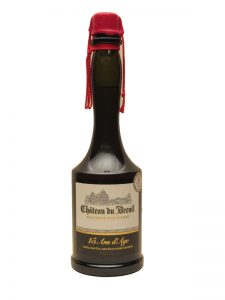 “This luxurious French spirit will bring a touch of sophistication to any home bar” says The Independent about the lesser known French brandy, Calvados. The article features 7 of the best on the market including our very popular Chateau du Breuil 15 Year Old Pays d’Auge Calvados. “Winner of a gold at the International Wine & Spirit Competition, you don’t have to just take our word for it that its good.” We have always loved this beautifully presented calvados from the top cru. “With its waxed lid and red-rope fastening, opening a bottle of this one feels like a ceremony in itself.” The presentation is matched admirably by its aroma and flavour ….. Imagine the smell as a child, coming home from school just as granny is taking a fruit cake out of the oven, this calvados is full of sultana and baked apple aromas and a rich baked apple taste. It is made from 80% fallen apples (which have a higher sugar content) and these account for its unique and delicious flavour. So, with Father’s Day around the corner, what are you waiting for?
“This luxurious French spirit will bring a touch of sophistication to any home bar” says The Independent about the lesser known French brandy, Calvados. The article features 7 of the best on the market including our very popular Chateau du Breuil 15 Year Old Pays d’Auge Calvados. “Winner of a gold at the International Wine & Spirit Competition, you don’t have to just take our word for it that its good.” We have always loved this beautifully presented calvados from the top cru. “With its waxed lid and red-rope fastening, opening a bottle of this one feels like a ceremony in itself.” The presentation is matched admirably by its aroma and flavour ….. Imagine the smell as a child, coming home from school just as granny is taking a fruit cake out of the oven, this calvados is full of sultana and baked apple aromas and a rich baked apple taste. It is made from 80% fallen apples (which have a higher sugar content) and these account for its unique and delicious flavour. So, with Father’s Day around the corner, what are you waiting for?

 Cognac is known as the King of Brandies so makes the perfect gift this Father’s Day. What better way to say “Thanks”, “I Love You” or just, “Enjoy”?
Cognac is known as the King of Brandies so makes the perfect gift this Father’s Day. What better way to say “Thanks”, “I Love You” or just, “Enjoy”?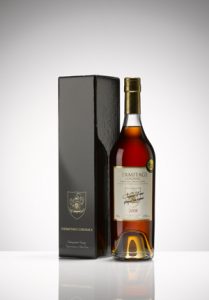 “There can be few spirits with such an illustrious pedigree and premium connotations as Cognac.” Following the last International Wine and Spirit’s Competition (IWSC) a list of the
“There can be few spirits with such an illustrious pedigree and premium connotations as Cognac.” Following the last International Wine and Spirit’s Competition (IWSC) a list of the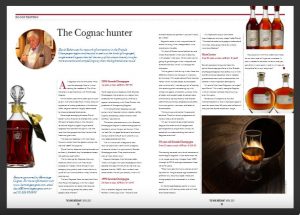 The Wine Merchant is the first trade magazine aimed solely at independent wine retailers and has been around for nearly 10 years. This month it published a double page spread featuring the founder of
The Wine Merchant is the first trade magazine aimed solely at independent wine retailers and has been around for nearly 10 years. This month it published a double page spread featuring the founder of 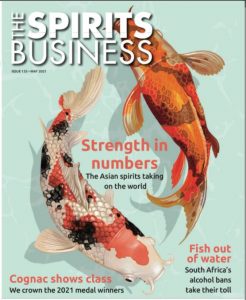 Regular readers of our Blog will know that we have often compared the astronomical prices of aged and vintage whiskies to the far more modest cognac equivalents, but there are signs that this could be about to change. Owen Bellwood, writing for The Spirits Business, has been investigating the latest trends in the cognac market and has published
Regular readers of our Blog will know that we have often compared the astronomical prices of aged and vintage whiskies to the far more modest cognac equivalents, but there are signs that this could be about to change. Owen Bellwood, writing for The Spirits Business, has been investigating the latest trends in the cognac market and has published 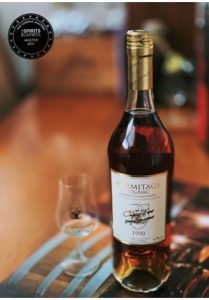 The Cognac Masters 2021 results have just been announced and we are thrilled to report that our new
The Cognac Masters 2021 results have just been announced and we are thrilled to report that our new 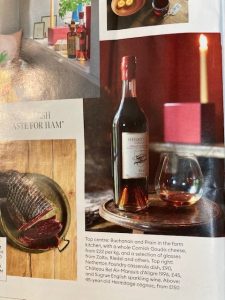
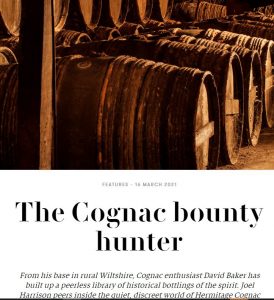
 We are delighted to inform you that, the United States of America has suspended the 25% Tariff on imported
We are delighted to inform you that, the United States of America has suspended the 25% Tariff on imported 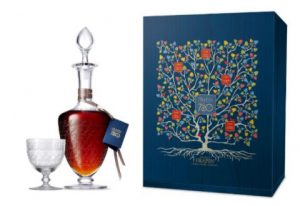 Frapin has just released a limited edition run of this unique presentation to celebrate 750 years since the family’s oldest member was born in Cognac in 1270. We do applaud these small family firms who have passed on their skills from generation to generation and not taken the easy route of selling to the ‘big four’. The Frapin 750 contains some very old Grande Champagne eau de vie, albeit blended, and is presented in a Baccarat crystal carafe decorated with Belle Epoch-like grapevine etchings. Just 21 of these presentations have been produced – to represent the 21 generations of the Frapin family – now that really is history in a bottle. It oozes quality and style but so does the price tag. One of these will set you back an astounding £43,956. That’s equivalent to 25 of our
Frapin has just released a limited edition run of this unique presentation to celebrate 750 years since the family’s oldest member was born in Cognac in 1270. We do applaud these small family firms who have passed on their skills from generation to generation and not taken the easy route of selling to the ‘big four’. The Frapin 750 contains some very old Grande Champagne eau de vie, albeit blended, and is presented in a Baccarat crystal carafe decorated with Belle Epoch-like grapevine etchings. Just 21 of these presentations have been produced – to represent the 21 generations of the Frapin family – now that really is history in a bottle. It oozes quality and style but so does the price tag. One of these will set you back an astounding £43,956. That’s equivalent to 25 of our 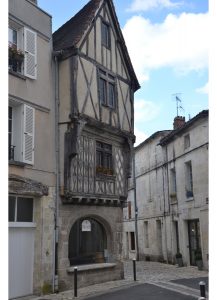 The Cognac region of The Charente and Charente Maritime has always been a popular tourist destination as it enjoys a warm, hospitable climate that borders the Atlantic Ocean. Maybe not all visitors are aware of its long, fascinating history as the producer of the King of Brandies but that is, hopefully, about to change. The Bureau National Interprofessionnel du Cognac (BNIC), Cognac’s regulatory body, has launched a project for local producers, restauranteurs, leisure professionals, coopers and hoteliers to make the appellation more accessible when travel and tourism open up again. By offering a wider range of visitor experiences, it hopes to promote Cognac as a unique tourist destination. The General Director of the BNIC said “Visiting the region is a great way to meet the women and men who daily work in the vineyards, distilleries or cellars to create this wonderful product. Their expertise is part of the French cultural heritage we are proud of.” He is hoping that this focus on tourism will attract new drinkers to the spirit,
The Cognac region of The Charente and Charente Maritime has always been a popular tourist destination as it enjoys a warm, hospitable climate that borders the Atlantic Ocean. Maybe not all visitors are aware of its long, fascinating history as the producer of the King of Brandies but that is, hopefully, about to change. The Bureau National Interprofessionnel du Cognac (BNIC), Cognac’s regulatory body, has launched a project for local producers, restauranteurs, leisure professionals, coopers and hoteliers to make the appellation more accessible when travel and tourism open up again. By offering a wider range of visitor experiences, it hopes to promote Cognac as a unique tourist destination. The General Director of the BNIC said “Visiting the region is a great way to meet the women and men who daily work in the vineyards, distilleries or cellars to create this wonderful product. Their expertise is part of the French cultural heritage we are proud of.” He is hoping that this focus on tourism will attract new drinkers to the spirit,